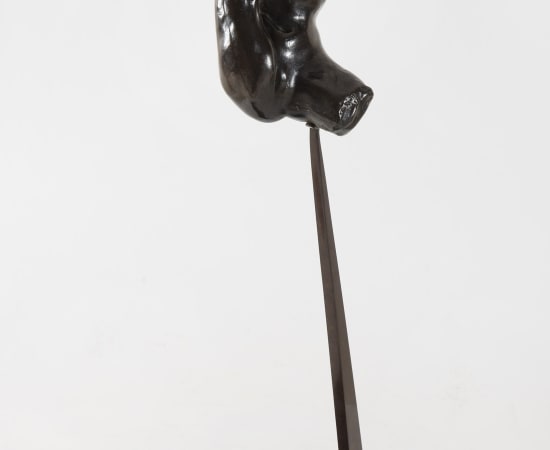Auguste Rodin (1840-1917) French
Works
Video
Biography
Auguste Rodin (1840–1917) was a pioneering French sculptor whose innovative works laid the foundation for modern sculpture. Born on November 12, 1840, in Paris, France, Rodin displayed an early aptitude for art, enrolling at the Petite École, a school specializing in art and mathematics, at the age of 14. Despite facing challenges, including multiple rejections from the prestigious École des Beaux-Arts, Rodin's determination led him to pursue a career as a decorative artist, honing his skills in modeling and sculpture.
In 1864, Rodin submitted his first significant sculpture, "The Man with the Broken Nose," to the Paris Salon. This unconventional piece, characterized by its raw realism and incomplete form, was rejected by the Salon but marked the beginning of Rodin's departure from traditional sculptural norms. A pivotal moment in his career came in 1875 when a trip to Italy exposed him to the works of Michelangelo and Donatello, profoundly influencing his artistic direction. This experience inspired "The Age of Bronze" (1877), a sculpture so lifelike that it led to accusations of casting from a live model. This controversy, however, ultimately enhanced his reputation, showcasing his exceptional skill in capturing human emotion and form.
In 1880, Rodin received a commission to create a portal for a planned Museum of Decorative Arts in Paris. This project evolved into "The Gates of Hell," a monumental work inspired by Dante's "Inferno." Although the museum was never realized, and the piece remained unfinished at his death, "The Gates of Hell" served as a source of many of Rodin's most renowned sculptures, including "The Thinker" and "The Kiss." These works exemplify his ability to convey complex human emotions and experiences through dynamic forms.
Rodin's approach to sculpture was revolutionary; he focused on realism, character, and emotion, often leaving works in an "unfinished" state to highlight their raw beauty. His portraits of prominent figures, such as Honoré de Balzac and Victor Hugo, further solidified his status as a master sculptor. Despite facing criticism and controversy, Rodin's dedication to his art never wavered. He continued to produce works that challenged conventional aesthetics, paving the way for future generations of artists.
Bailly Gallery honors Auguste Rodin's enduring legacy by featuring a curated selection of his sculptures, drawings, and prints. These pieces offer insight into Rodin's creative process and his contributions to modern art. Through exhibitions and scholarly research, the gallery provides art enthusiasts and collectors with the opportunity to engage deeply with Rodin's work, appreciating the nuances and innovations that define his oeuvre.
In 1864, Rodin submitted his first significant sculpture, "The Man with the Broken Nose," to the Paris Salon. This unconventional piece, characterized by its raw realism and incomplete form, was rejected by the Salon but marked the beginning of Rodin's departure from traditional sculptural norms. A pivotal moment in his career came in 1875 when a trip to Italy exposed him to the works of Michelangelo and Donatello, profoundly influencing his artistic direction. This experience inspired "The Age of Bronze" (1877), a sculpture so lifelike that it led to accusations of casting from a live model. This controversy, however, ultimately enhanced his reputation, showcasing his exceptional skill in capturing human emotion and form.
In 1880, Rodin received a commission to create a portal for a planned Museum of Decorative Arts in Paris. This project evolved into "The Gates of Hell," a monumental work inspired by Dante's "Inferno." Although the museum was never realized, and the piece remained unfinished at his death, "The Gates of Hell" served as a source of many of Rodin's most renowned sculptures, including "The Thinker" and "The Kiss." These works exemplify his ability to convey complex human emotions and experiences through dynamic forms.
Rodin's approach to sculpture was revolutionary; he focused on realism, character, and emotion, often leaving works in an "unfinished" state to highlight their raw beauty. His portraits of prominent figures, such as Honoré de Balzac and Victor Hugo, further solidified his status as a master sculptor. Despite facing criticism and controversy, Rodin's dedication to his art never wavered. He continued to produce works that challenged conventional aesthetics, paving the way for future generations of artists.
Bailly Gallery honors Auguste Rodin's enduring legacy by featuring a curated selection of his sculptures, drawings, and prints. These pieces offer insight into Rodin's creative process and his contributions to modern art. Through exhibitions and scholarly research, the gallery provides art enthusiasts and collectors with the opportunity to engage deeply with Rodin's work, appreciating the nuances and innovations that define his oeuvre.
Enquire





